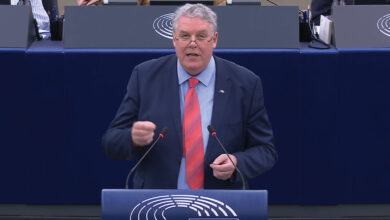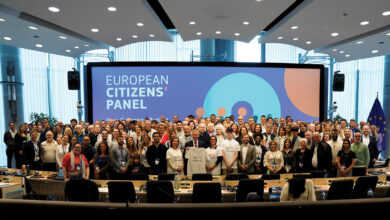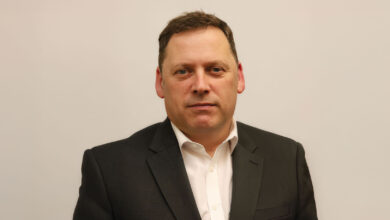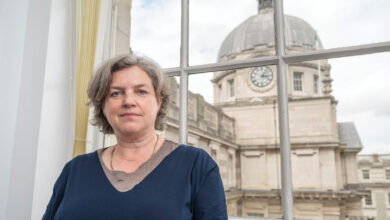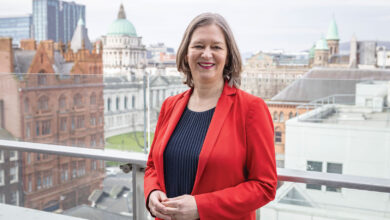A Digital Parliament: Enabling Democracy
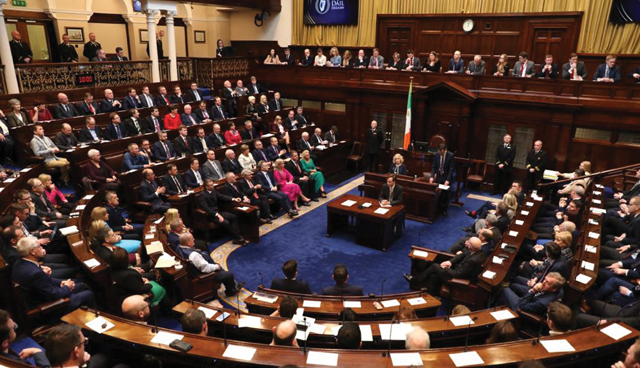
Elaine Cameron and Ciarán Doyle, Principal Officers the Houses of the Oireachtas’ ICT unit talk to Ciarán Galway about the Oireachtas Digital Transformation Programme and the creation of a digital parliament.
In 2019, the Houses of the Oireachtas Commission published its three-year strategic plan including an outline of four key objectives that would assist in its mission to deliver a high-performing parliamentary service that enables the Houses of the Oireachtas to discharge its constitutional functions, supports members as parliamentarians and representatives of the people, and promotes an open and accessible Parliament.
Included among those objectives was the delivery of a digital parliament, with ambitions to transform the technology used by the houses and committees, enable easier public access to the work of the Oireachtas and its members, and the modernisation of technical infrastructure.
Elaine Cameron, head of operations, live and development, and Ciarán Doyle, head of innovation and infrastructure, are currently leading that digital transformation programme. Having both served within the ICT unit for over 18 and 14 years respectively, they are best placed to describe the transformation journey which has occurred and future ambitions.
In 2016, a review of the Oireachtas’ Enterprise Architecture and subsequent analysis of processes technologies and comparative legislatures formed the basis for a digital Oireachtas strategy. The identification of seven key programmes to facilitate an open, accessible, and efficient Oireachtas, ranging from ‘digital parliament’, through to ‘informing the citizen’ and ‘technology in the chamber’ have formed the basis of digital transformation work in recent years.
Outlining the premise of what a digital parliament looks like and therefore, what the Houses of the Oireachtas is striving for, Doyle is quick to point out that comparisons are limited. Estonia, which is held up as an exemplar of eGovernment only gained independence in 1991 and so was effectively a greenfield site for digital government deployment, compared to the 100 years of processes, procedures and culture embedded into Ireland’s parliamentary governance.
However, outside of Estonia, many existing parliaments share the common challenge that their traditional methods of operation fail to fit with the modern-day eco-system of information exchange.
“Being a digital parliament means we have to bring the work processes and the systems for those processes in to the modern era so that they can effectively communicate with the outside world,” Doyle observes.
The Principal Officer acknowledges the frequent engagement between the Oireachtas and other parliaments, in pursuit of new solutions and, ultimately, to become best in class for a digital parliament.
As Cameron explains, initial work on the digital modernisation programme, including the deployment of new technologies, provided a foundation for digital transformation and better equipped end users for progress on the digital parliament programme. Initially, this has focused on the procedural side of the house rather than in the chamber, meaning the deployment of bespoke applications to improve efficiencies.
In the past four years, the ICT Unit has built a digital parliament platform, delivering 14 bespoke solutions across the various business units within the Oireachtas, feeding into a new digital order paper and a Dáil Business website.
“Rather than publish information through a content management system, we carried out a root and branch rebuild of all information management systems, which allowed for automated interconnection and a purely digital workflow,” Doyle outlines.
“In the next three years, we are going to double that footprint and begin work in parliamentary business unit offices which we have yet to reach.”
Undoubtedly, the pandemic has served to accelerate progress on digital transformation. For instance, as Cameron details, the speed of change in relation to digital modernisation has been so rapid that following completion of a three-year strategy at the end of 2021, the new and refreshed three-year strategy effectively omits digital modernisation.
“We had already embarked on delivering technologies but with Covid, we essentially condensed a 13-month plan into three months and deployed it over six days. The pandemic was a massive catalyst, but we were fortunate that our digital modernisation programme underway because we had the foundations in place.”
Elaborating on this, Doyle agrees that the pandemic served as an accelerant, but believes that a cultural shift from one of resistance was enabled by three years of preparatory engagement. “Pre-pandemic we did a lot of engagement work with the various business units, and we knew what was possible but that did not mean that the organisation was ready to jump and do it. However, we are now in an optimum position where the business is telling us how it should change, meaning the momentum is no longer coming from us alone.
“We are now able to approach digital transformation in a collaborative way because the dial has moved, and colleagues can now see the opportunities. The culture and the conception of digitalisation has changed and with the groundwork now in place, delivery over the next three years should be enhanced.”
“The pandemic was a massive catalyst, but we were fortunate that our digital modernisation programme underway because we had the foundations in place.”
Elaine Cameron, Principal Officer with responsibility for operations, live and development, ICT Unit, Houses of the Oireachtas Service
Having started her public sector career in the Department of Justice, Elaine joined the Houses of Oireachtas’ ICT Unit in 2004.
Chamber
Alongside ambitions to further digitalise processes within the Oireachtas’ business units, the Principal Officers explain that the current strategy will now focus on introducing digitalisation into the chamber. Enabled by the digitalisation of the back-office processes, delivery of solutions will enable real-time information to be dispensed to multiple endpoints.
“We are now able to approach digital transformation in a collaborative way because the dial has moved, and colleagues can now see the opportunities.”
Ciarán Doyle, Principal Officer with responsibility for innovation and infrastructure, ICT Unit, Houses of the Oireachtas Service
Ciarán Doyle joined the civil service in 2004, originally spending four years on the parliamentary side of the house before taking up post in the ICT unit.
“There are multiple ways to engage with content and we need to effectively service them all. So, getting to the chamber in the next three years and servicing that programme out is an exciting place to be,” explains Doyle.
“Additionally, we will be looking to adopt AI into our work processes. This will help efficiency in our work processes but also enhance the user experience as well.”
Concluding, Cameron outlines that an additional programme that will appear on the ICT unit’s radar in the coming years is the an integrated corporate support system, a workload of equal scale to that of the digital parliament.

